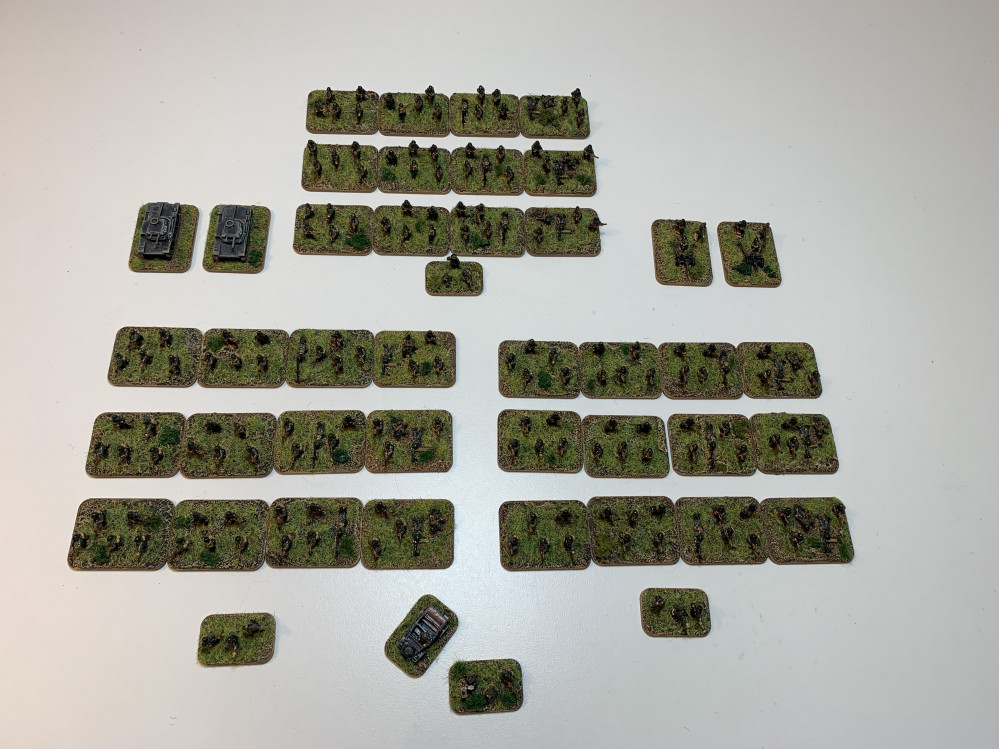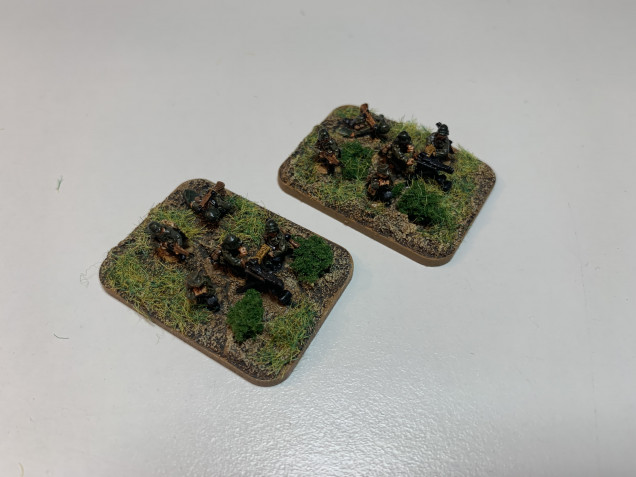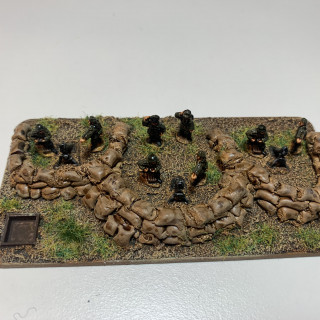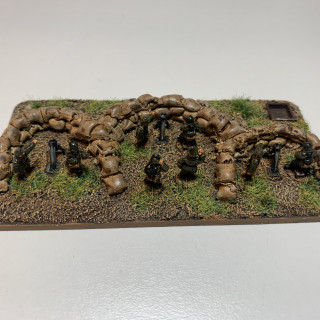
O Group in 10mm
Some more supports
Some more support assets for my Early War German battalion.
The first is a platoon of Medium Machine Guns. These can be fielded singly, together or as attachments to infantry platoons. One of the nice things about 10mm is that you don’t need to be so worried about accuracy in terms of equipment. On each of the bases above there is only one figure that is officially designated as “Early War” in Pendraken’s catalogue and the MG itself is described as an MG42 rather than the MG34 which was used during the 1940 campaign.Once the figures are painted in a uniform fashion, any differences in equipment detail that you might fancy you can detect just fade away.
The second support asset is a Sniper Team. These are only used occasionally in O Group. To reflect the Sniper’s emphasis on remaining hidden, I based the team on the smallest base I had, just 20mm across.
The last support asset covered in this entry is one that doesn’t need to be modelled as it represents something well outside the area of operations covered on the tabletop. The Mortar Platoon is counted as an Off Table asset and can be called upon through expending a designated number of command orders. As it is a dedicated battalion asset it is generally more readily available than regimental or divisional artillery, but not as powerful. However, having said that it didn’t need to be modelled, I wanted to do so as it would be a more tangible way to introduce new players to the game.
I based the mortar platoon on a 100mm x 50mm base. In reality the platoon would be spread over a much wider area and far less cramped but this is a decent compromise between reality and representation. I glued a small dice frame at the front of the base because mortars can run low on ammo and it might be helpful to place a dice as a reminder if this happens. I then added the Vallejo basing mix and placed the mortars, their crews and the officers. Once that was dry, I laid out the sandbag emplacements. These were made of milliput. I rolled out a very thin sausage of the stuff and then cut out individual sandbags with a craft knife and laid them one on top of the other. Placing two or three rows alongside each other at ground level and then building two rows and then a final row at the top gives the impression of a sloped “glacis” which can be quite pleasing. Once the milliput was dried and hardened the whole base was primed white for painting.































![TerrainFest 2024 Begins! Build Terrain With OnTableTop & Win A £300 Prize! [Extended!]](https://images.beastsofwar.com/2024/10/TerrainFEST-2024-Social-Media-Post-Square-225-127.jpg)














































Leave a Reply